Lake Champlain Cyanobacteria and Cyanophage
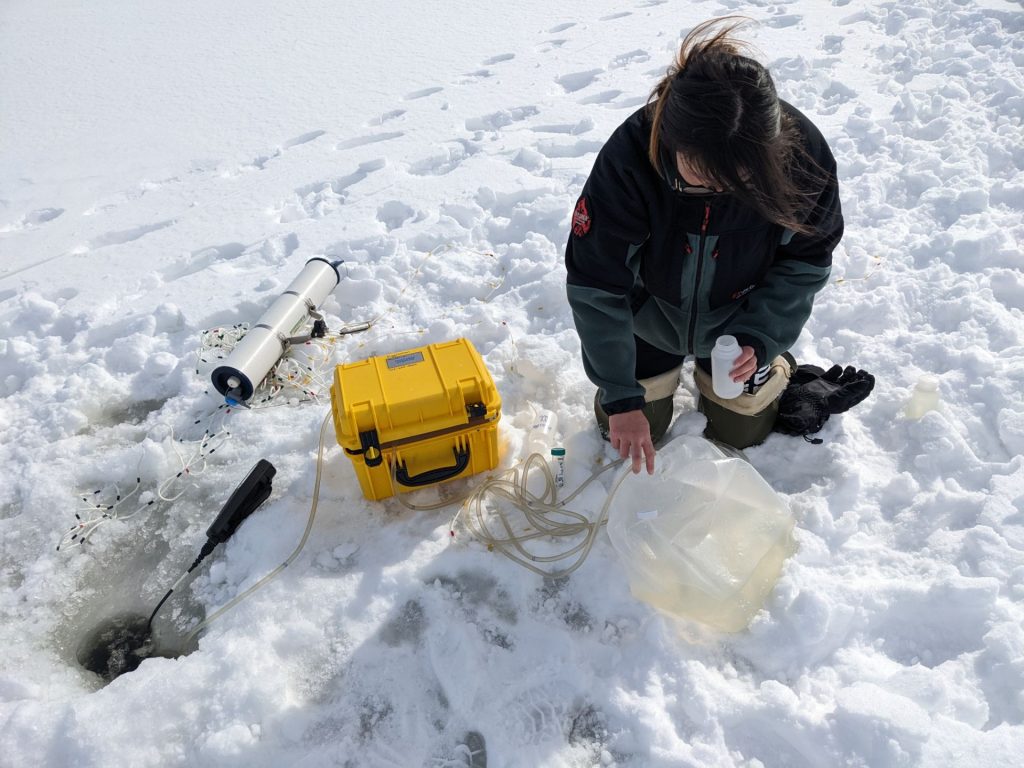
The Eggleston Lab has received funding from the USGS to investigate cyanobacteria and cyanophage in Lake Champlain. Two awards 2021-2023 include “Vermont cyanobacterial harmful algal bloom ecology and toxin biosynthesis gene activity: a path to novel management strategies,” and “Lake Champlain winter microbial dynamics and long-term data trends.” With this funding we investigated the diversity of cyanobacteria, especially bloom-forming, toxin-producing cyanobacteria, and their viruses. The second award focused on measuring winter microbial communities and understanding the roles of winter microbial ecology in the contexts of long term data monitoring to investigate how changing winter conditions impact harmful algal bloom dynamics. The lab has USGS funding starting that started September 2023, “Lake Champlain interannual winter microbial dynamics,” and will continue the investigation of spatiotemporal dynamics linked to cyanobacterial harmful algal blooms. Additionally, an award for a multi-year NOAA Lake Champlain Sea Grant was recommended for funding that starts February 2024. That project, “Integrating Microbial Ecology and Community Knowledge to Enhance Understanding of Cyanobacterial Bloom Phenology,” continues our efforts in microbial ecology of Lake Champlain and expands our efforts to include community and traditional ecological knowledge. Current Team Tiny member Irene Hu ’24 has led the effort in winter field sampling and omics analysis development. In this blog post we outline the initial sampling trip from 2018 and summer 2019 efforts were captured by the Middlebury Newsroom.
Toxoplasma gondii Exposure in Traditional Foods
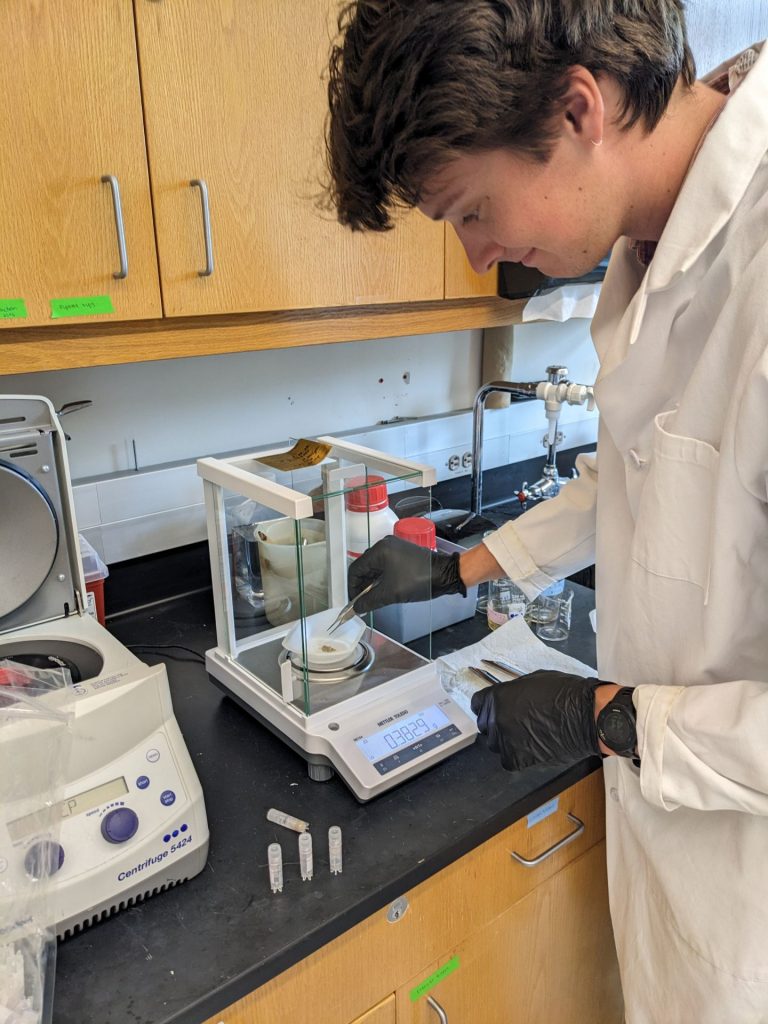
The newest collaborative investigation between the Eggleston and Byrne Labs is assessing the presence of T. gondii, the parasite responsible for toxoplasmosis, in traditional food sources and a potential route of exposure that might disproportionately impact indigenous communities. Preliminary work from Team Tiny alumni Kaja Aagaard and Isabel Tseng have provided the groundwork for PCR based assay. Current Team Tiny member Eli DiBari ’24 is continuing these efforts by testing the assay in oyster tissue matrix and determining assay sensitivity.
Extremophilic Adaptations to pH and Temperature
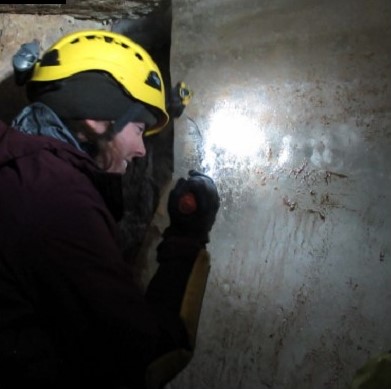
In collaboration with Dr. Wil Leavitt and members of the Leavitt Lab at Dartmouth College we are interested in how extremophilic archaea thrive in low pH and high temperature conditions. Using a few model archaeal systems (i.e. Sulfolobus islandicus and Sulfolobus acidocaldarius) we are using RT-qPCR to investigate transcript copy number related to archaeal lipid cyclization under different growth conditions. Additionally, Middlebury alumna Miranda Seixas’s thesis on an ice cave in Utah characterizing microbial communities and the geochemistry is in preparation for submission.
Dysbiosis and the Coral Holobiont
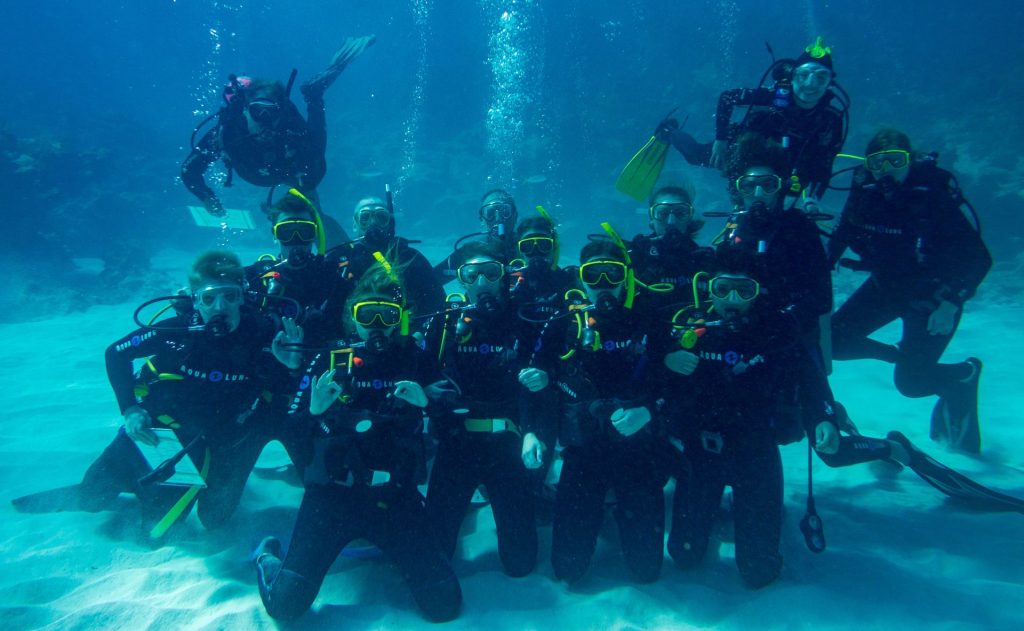
Coral reef ecosystems face severe threats from anthropogenic climate change at local, regional, and global scales. Our paper investigated the coral holobiont (i.e. coral host, microalgae, and bacteria and archaea) to assess variation in a thermotolerant reef system off of Abaco, The Bahamas. This project involved students in the BIOL 371 course and Team Tiny member Evan Fedorov We hope to continue some work with coral samples investigating dysbiosis, or microbial community changes, that may contribute to the onset and progression of a novel and devastating coral disease, stony tissue coral loss disease (SCTLD).
Mercury Methylation in River Wetland Sediments
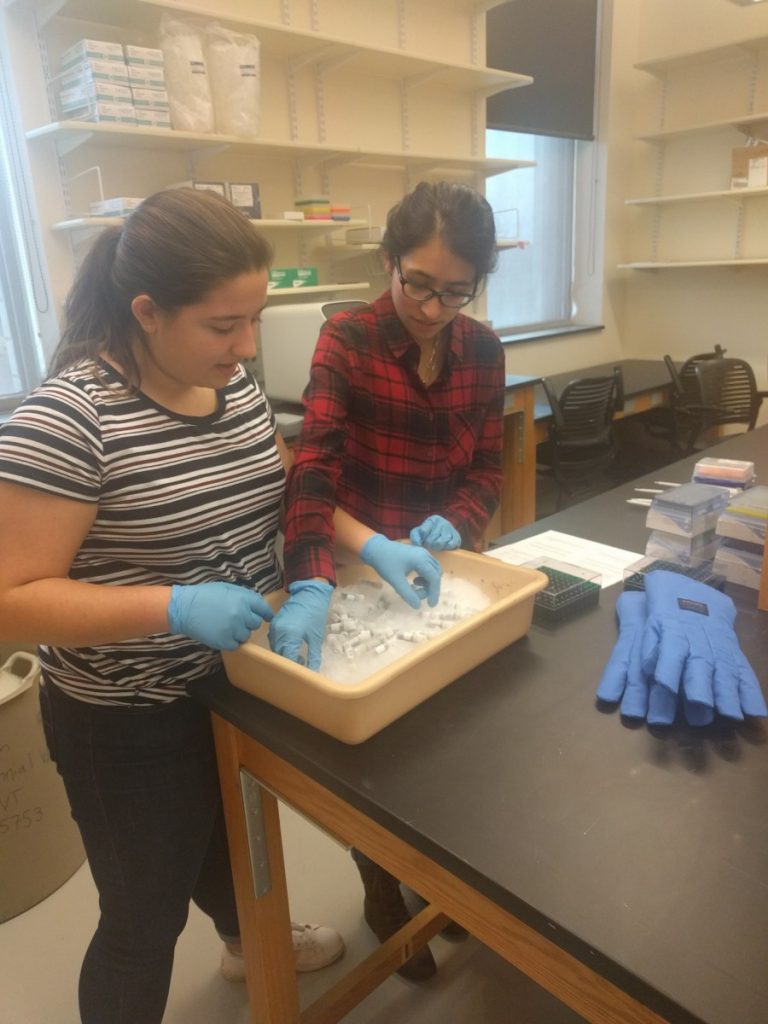
The Eggleston Lab collaborated with Dr. Michael Twiss at Clarkson University and Dr. Jeff Ridal at St. Lawrence River Institute of Environmental Sciences to understand and track mercury mobilization in the St. Lawrence River. Our contribution is to study the mercury-methylating microbes and their activity in river wetland sediments to understand the microbial component of this mobilization. We extract DNA and identify microbes using 16S rRNA amplicon sequencing, and are currently optimizing qPCR for the mercury-methylating genes hgcAB. Initial findings were published with Clarkson University PhD candidate Evie Brahmstedt as lead author, “Assessment of mercury mobilization potential in Upper St. Lawrence River riparian wetlands under new water level regulation management.” Team Tiny member Sophia Fatima ’24 aims to complete a senior thesis investigating bioremediation opportunities for mercury cycling in Vermont locations.